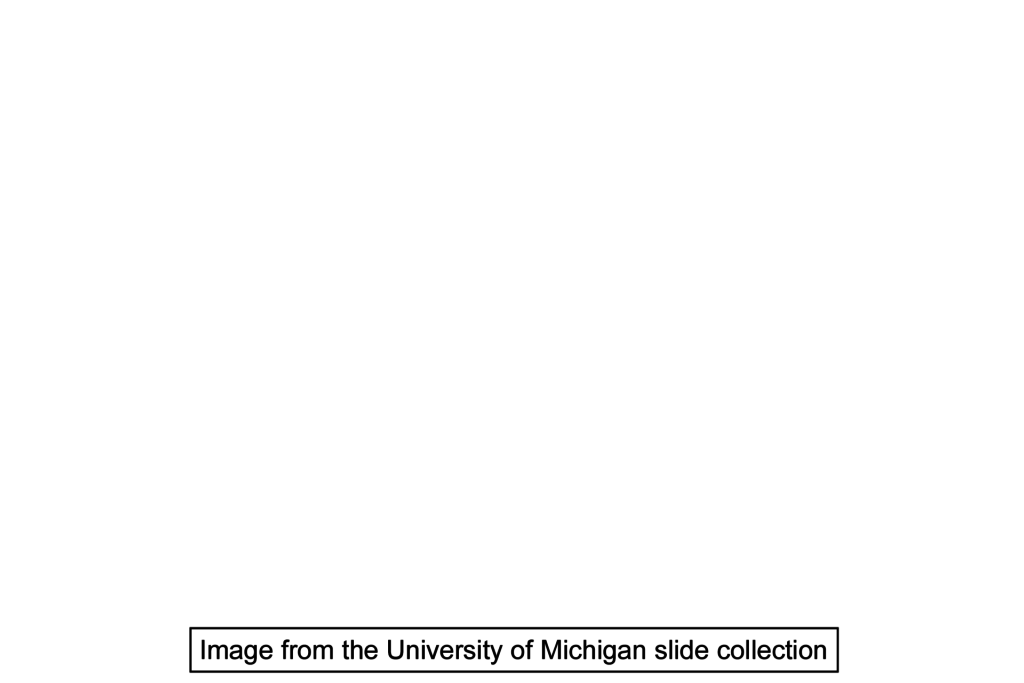
Spleen: white pulp
The central arteriole and its relationship to the PALS is seen at higher magnification (area indicated by the yellow frame in the inset). For most of its course, the central arteriole is surrounded by PALS. Frequently, lymphoid nodules, B-dependent areas that form part of white pulp, develop within the PALS, causing the central arteriole to be eccentrically located. A germinal center is just beginning to form. 200x

Periarterial lymphoid sheath (PALS)
The central arteriole and its relationship to the PALS is seen at higher magnification (area indicated by the yellow frame in the inset). For most of its course, the central arteriole is surrounded by PALS. Frequently, lymphoid nodules, B-dependent areas that form part of white pulp, develop within the PALS, causing the central arteriole to be eccentrically located. A germinal center is just beginning to form. 200x

Central arteriole
The central arteriole and its relationship to the PALS is seen at higher magnification (area indicated by the yellow frame in the inset). For most of its course, the central arteriole is surrounded by PALS. Frequently, lymphoid nodules, B-dependent areas that form part of white pulp, develop within the PALS, causing the central arteriole to be eccentrically located. A germinal center is just beginning to form. 200x

Lymphoid nodule
The central arteriole and its relationship to the PALS is seen at higher magnification (area indicated by the yellow frame in the inset). For most of its course, the central arteriole is surrounded by PALS. Frequently, lymphoid nodules, B-dependent areas that form part of white pulp, develop within the PALS, causing the central arteriole to be eccentrically located. A germinal center is just beginning to form. 200x

Germinal center
The central arteriole and its relationship to the PALS is seen at higher magnification (area indicated by the yellow frame in the inset). For most of its course, the central arteriole is surrounded by PALS. Frequently, lymphoid nodules, B-dependent areas that form part of white pulp, develop within the PALS, causing the central arteriole to be eccentrically located. A germinal center is just beginning to form. 200x

Red pulp
The central arteriole and its relationship to the PALS is seen at higher magnification (area indicated by the yellow frame in the inset). For most of its course, the central arteriole is surrounded by PALS. Frequently, lymphoid nodules, B-dependent areas that form part of white pulp, develop within the PALS, causing the central arteriole to be eccentrically located. A germinal center is just beginning to form. 200x

Trabeculum
The central arteriole and its relationship to the PALS is seen at higher magnification (area indicated by the yellow frame in the inset). For most of its course, the central arteriole is surrounded by PALS. Frequently, lymphoid nodules, B-dependent areas that form part of white pulp, develop within the PALS, causing the central arteriole to be eccentrically located. A germinal center is just beginning to form. 200x

Image source >
Image taken of a slide from the University of Michigan collection.